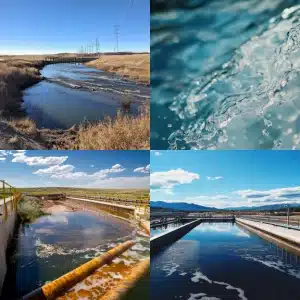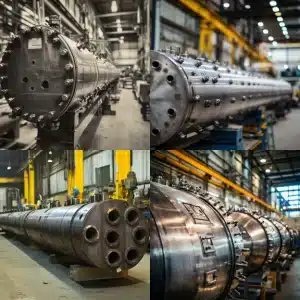
Understanding the cost differences between pressure vessels and piping systems is crucial for industrial planning. Pressure vessels generally have higher upfront costs due to specialized materials, welding, and compliance with ASME standards. Regular piping systems are less expensive initially but may incur higher long-term maintenance costs. Choosing the right solution depends on your operational needs, safety requirements, and long-term budget considerations.
Pressure Vessels vs Piping Systems Cost
Pressure vessels vs piping systems cost is an important consideration when planning industrial infrastructure. These systems serve critical roles in industries such as oil and gas, power generation, and chemical processing. However, their cost differences arise from variations in design, materials, and manufacturing processes. At Red River, we focus on delivering cost-effective, high-quality solutions while ensuring safety and regulatory compliance.
What Are Pressure Vessels?
Pressure vessels are engineered containers designed to hold gases or liquids under high pressure. The precision in their design and manufacturing ensures they can withstand extreme forces while maintaining integrity and safety. Industries like power generation, oil and gas, and chemical processing rely heavily on pressure vessels for operational efficiency.
The higher cost of pressure vessels compared to piping systems reflects the use of advanced materials, specialized welding techniques, and strict adherence to safety standards. Each vessel is often customized to meet specific pressure, temperature, and corrosion requirements. This upfront investment reduces downtime, maintenance expenses, and risk, providing excellent long-term value.
Pressure Vessel Safety Standards and Compliance
Pressure vessels must comply with stringent safety regulations to protect personnel and equipment. This includes following ASME code for pressure vessel safety and incorporating regular pressure vessel inspection and maintenance protocols. Ensuring compliance involves:
- Rigorous design and testing processes
- Detailed inspection checklists
- Adherence to safety standards for pressure vessels
- Regular documentation and certification reviews
Key Features of Regular Piping Systems
Regular piping systems transport fluids or gases across facilities at lower pressures. They are generally simpler in design and subject to less stringent safety requirements compared to pressure vessels.
While their installation costs are lower, long-term maintenance can become significant if these systems are used beyond their design limitations. Considering how often pressure vessels need to be inspected versus standard piping systems highlights the difference in lifecycle costs and operational safety.
Factors Affecting the Costs of Pressure Vessels
Several factors influence the cost of pressure vessels:
Material Costs and Manufacturing Complexity
- High-grade materials such as stainless steel or specialized alloys
- Advanced welding techniques and fabrication
- Compliance with what is ASME code for pressure vessel safety
Customization and Design Differences
- Tailored designs for specific industry requirements
- Specialized internal components or coatings
- External features such as climate control or electrical systems
Maintenance and Inspection Requirements
- Regular inspections following how to inspect a pressure vessel guidelines
- Incorporating what to include in a pressure vessel inspection checklist
- Long-term maintenance and operational safety considerations
Comparing the Costs of Regular Piping Systems
Installation Costs and Durability
- Lower initial installation expenses
- Simpler materials and fabrication methods
- Quicker installation times
Operational and Maintenance Expenses
- Ongoing maintenance for leaks, corrosion, or part replacement
- Increased costs in demanding operational environments
Standard vs. High-Pressure Piping Systems
- Standard systems are more affordable but limited in capacity
- High-pressure piping systems require stronger materials and specialized installation
Which Option Is More Cost-Effective for Your Project?
Short-Term vs Long-Term Costs
- Regular piping systems are cheaper upfront but may have higher long-term costs
- Pressure vessels are more expensive initially but offer greater durability and less frequent maintenance
Best Use Cases for Pressure Vessels vs Regular Piping
- Pressure vessels are ideal for high-pressure containment in industries like oil and gas, power generation, and biogas
- Regular piping systems are suitable for low-pressure applications where cost-effectiveness is key
Pressure Vessels vs Piping Systems Cost
Pressure vessels vs piping systems cost comparison highlights the importance of understanding both upfront and long-term expenses. While pressure vessels demand higher initial investment, their safety, durability, and compliance with pressure vessel safety standards and compliance make them valuable for critical industrial applications. Conversely, regular piping systems may be more affordable initially but can incur higher maintenance and operational costs over time. Red River provides expertly designed pressure vessels and piping solutions to optimize your industrial projects while maintaining compliance, safety, and cost-effectiveness.
Need a Reliable Partner?
Red River specializes in the design and manufacturing of pressure vessels. We also fabricate related items such as prefabricated spools and skid packages.
Reach out to us today and experience the Red River difference. Where American Made and American Values come together, we care more.
Visit Red River
Frequently Asked Questions
What is the primary difference between a pressure vessel and a regular piping system?
A pressure vessel is designed to contain fluids or gases under high pressure, while regular piping systems transport fluids at lower pressures. Pressure vessels follow strict safety standards, whereas piping systems have simpler regulatory requirements.
Why do pressure vessels tend to be more expensive than regular piping systems?
They require advanced materials, specialized welding, and compliance with what are the safety standards for pressure vessels. Custom designs, inspections, and adherence to the ASME code for pressure vessel safety increase upfront costs.
How often do pressure vessels need to be inspected compared to regular piping systems?
Pressure vessels require more frequent and detailed inspections due to higher safety risks. Piping systems are inspected less rigorously unless operating under high pressure or extreme conditions.
Are there any industries where regular piping systems would be preferred over pressure vessels?
Yes. Industries like water treatment, HVAC, and food processing often use regular piping systems because high-pressure containment is not required, reducing costs while still ensuring operational efficiency.
What are the common materials used in the construction of pressure vessels and piping systems?
Pressure vessels often use carbon steel, stainless steel, or specialized alloys, while piping systems may use PVC, copper, galvanized steel, or lower-grade steel depending on the application.
How do pressure vessels comply with safety regulations?
Compliance is achieved through design standards, ASME certification, regular inspections, and pressure vessel inspection and maintenance schedules to ensure operational safety.
What to include in a pressure vessel inspection checklist?
A checklist typically includes:
- Visual inspection for cracks or corrosion
- Pressure and temperature testing
- Verification of safety valves and gauges
- Documentation of all findings for regulatory compliance
Key Takeaways
- Pressure vessels require higher upfront investment but provide long-term durability and safety.
- Regular piping systems are more affordable initially but may incur higher maintenance costs.
- Compliance with pressure vessel safety standards and compliance is critical.
- Material selection, design customization, and inspections impact overall costs.
- Red River delivers cost-effective solutions that balance safety, performance, and reliability.
Related Blog Post
- Pipe Thickness in Pressure Vessels: Why It Matters for Safety and Reliability
- Understanding the Difference Between Pipes and Pressure Vessels
- Difference Between Piping Systems and Pressure Vessels
- Pressure Vessel and Pipe Testing
- Pressure Vessel and Pipe Testing
- Understanding the Differences Between Pipes and Pressure Vessels




